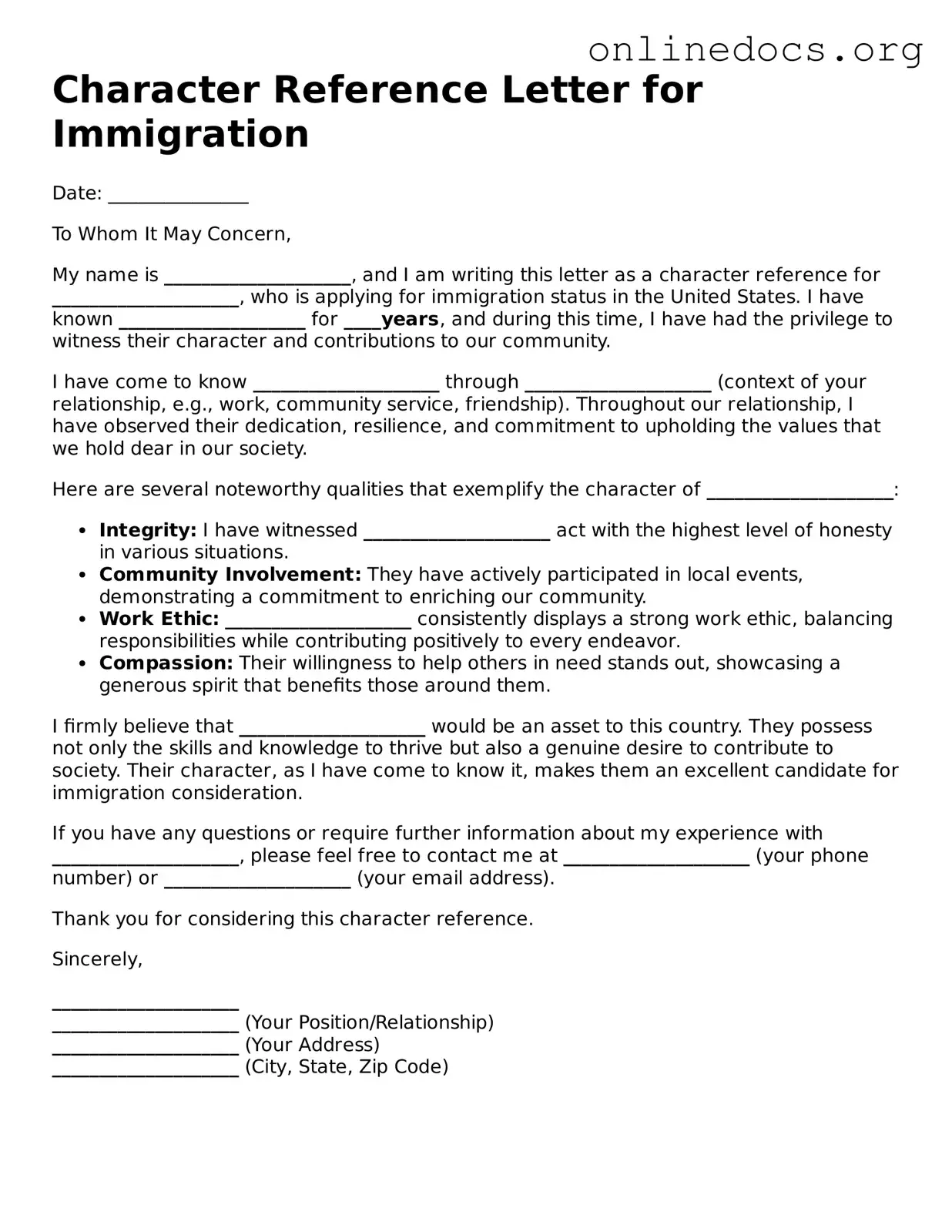A Character Reference Letter for Immigration serves as a personal endorsement of an individual's character, often used to support their immigration application. It is similar to a Personal Reference Letter, which also highlights an individual's qualities and experiences from the perspective of someone who knows them well. Both letters aim to provide insight into a person's character, but the Personal Reference Letter is more general and can be used in various contexts beyond immigration.
In the context of recommendation documents, a Sorority Recommendation Letter stands out as it is crafted to support a potential new member's bid for membership by highlighting their qualifications and personal attributes within the sorority community. Similar to other reference letters, it serves to enhance a candidate’s profile effectively during recruitment, with vital details that showcase how they align with the chapter's values. For those seeking guidance on crafting such documents, resources like smarttemplates.net/fillable-sorority-recommendation-letter can provide valuable templates and insights.
Another related document is the Employment Reference Letter. This letter is typically provided by a former employer or supervisor and details an employee’s work ethic, skills, and contributions to the workplace. While the Character Reference Letter focuses on personal attributes, the Employment Reference Letter emphasizes professional qualifications and accomplishments, making it suitable for job applications or professional settings.
The Affidavit of Support is another important document in the immigration process. This legal form is used to demonstrate that a sponsor can financially support an immigrant. Unlike the Character Reference Letter, which addresses personal character, the Affidavit of Support focuses on financial responsibility and the ability to provide for the immigrant’s basic needs.
A Letter of Recommendation is similar to a Character Reference Letter but is often used in academic or professional contexts. It usually comes from a teacher, professor, or employer and speaks to an individual’s abilities and potential. While both letters serve to vouch for a person, a Letter of Recommendation often includes specific achievements and qualifications relevant to a particular opportunity.
The Good Moral Character Letter is closely related to the Character Reference Letter for Immigration. This document specifically addresses the moral standing of an individual, often required in legal situations or immigration cases. It provides evidence of an individual's good character, similar to the Character Reference Letter, but with a more focused lens on moral conduct.
A Community Service Letter can also be compared to the Character Reference Letter. This document highlights an individual’s involvement in community service or volunteer work. While the Character Reference Letter discusses overall character, the Community Service Letter emphasizes altruism and commitment to helping others, which can positively influence immigration decisions.
The Family Reference Letter shares similarities with the Character Reference Letter, as it is typically written by a family member. This letter provides personal insights into an individual's character and values from the perspective of someone who knows them intimately. Both letters aim to affirm the individual’s character, but the Family Reference Letter often includes familial ties and personal anecdotes.
A Tenant Reference Letter is another document that can be likened to the Character Reference Letter. This letter is written by a landlord or property manager and speaks to a tenant's reliability, responsibility, and behavior as a renter. While it serves a different purpose, both letters aim to provide assurance about an individual's character and trustworthiness.
Lastly, a Character Witness Statement is similar in nature to the Character Reference Letter for Immigration. This statement is often used in legal settings, where a person vouches for another’s character during court proceedings. Both documents serve to affirm a person's character, but the Character Witness Statement is more formal and typically used in legal contexts.
